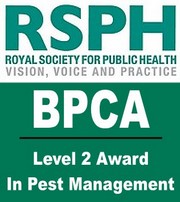Insect Pest Control Services - Preston, Southport
 We provide professional expert insect removal and advice service for Preston, Lancashire and North Merseyside.
We provide professional expert insect removal and advice service for Preston, Lancashire and North Merseyside.
Our years of experience in pest control solutions enables us to treat areas that may be causing problems to your home, business, rental property or environment.
All work provided by a BPCA qualified technician. Contract work undertaken, site surveys carried out.
- Fleas
- Wasp nests
- Bed Bugs
- Clothes Moths
- Cockroaches
- Ants
- Carpet Beetles
- Honey bee swarms taken away and re-hived with a local beekeeper unharmed. £65 fee.
ABOUT FLEAS
(Ctenocephalidesfelis)
There are about 60 different species of flea in Britain. All species are parasites (i.e. they need a host animal to live off). Many of these are associated with particular animals, so the dog flea, cat flea, and bird flea are all slightly different species. The human flea is very rare, but unfortunately although the different species of flea prefer to feed on their specific host, they will bite other hosts if they are hungry enough. Most of the flea infestations found in houses and on people are cat fleas.
Vacuum cleaners and regular washing of bedding in washing machines all make life more difficult for the flea. The heat in tumble dryers will desiccate fleas and their larvae and eggs. A piece of flea collar placed in your vacuum bag will help kill the fleas that hatch out from what you have vacuumed up.
Although during an infestation of fleas you will often find them on pets, or may see one on your clothing, these fleas are only moving out from their living areas to feed. They do not live on the host animal all the time.
Life cycle
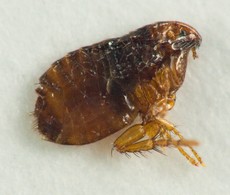
The life cycle starts with a female flea laying eggs. These eggs are not usually found on the animal, but are on the floor or in the animals bedding area. The eggs hatch into larvae within 2 or 3 days and feed on any debris they can find in the cracks of floorboards and around areas where cats, dogs or birds have their regular bedding or resting places. Fleas actually deposit blood rich faeces near the eggs, so when they hatch the larvae feed on it. After about 3 – 4 weeks the larvae spin a silk cocoon and inside this cocoon they turn into the adult flea. The adult flea needs some passing vibration to stimulate it to leave the cocoon. This may happen within a few days in an occupied house, but where the house is unoccupied; the fleas may remain dormant for many months.
This is why entering an empty house or shed may result in a sudden and large number of flea bites, as the fleas are starving and will bite at anything. A more normal situation is where a single flea is brought into the house by a domestic pet and the infestation then builds up until it is suddenly noticed. To complete the life cycle, the flea has to have a drink of host blood before it can lay breed and lay fertile eggs.
An adult flea is a tiny insect around the size of a pin head and dark brown in colour. Though you may see these adults it is important to realise that killing the odd flea seen jumping or only treating pet animals even with professional products will not bring the infestation under control.
The answer is to have a full survey and treatment of the whole house and any affected areas. If you have any pets, particularly cats and dogs they must be treated with an approved flea treatment in tandem with any other premises treatment that is being considered. Your veterinary surgeon will be able to advise you on the best pet treatments on offer.
Should you choose a premises treatment it is important to use a professional pest control operator to carry out the treatment; they have access to a range of insecticides which are far more effective than those on sale to the general public and also they have the training and knowledge to ensure that a thorough and effective job is done. A professional treatment remains effective for several weeks and will kill all larvae and adult fleas that come into contact with it.
After the insecticide wears away there is always the risk that a pet animal could bring more fleas into the house, so be vigilant when taking pets for walks or even visiting other houses. Remember that it only takes one egg-bound female flea entering your premises to start the whole cycle off again. Also remember that if the animal has fleas it will most certainly have tape worms or round worms and the fleas can transmit a vast list of nasty diseases, which pose a serious health problem to People.
For any treatment to be effective there are certain actions you the householder needs to take before and after any treatment provided, all responsible companies will advise you what you must do.
Before we start treatment, the householder will be expected to have vacuumed the whole house including the chairs, sofa and beds. If you have pets (cats and dogs inpeticular) they should have been treated with a good insect treatment. This is best perscribed by a Vet. Old pet bedding must be discarded. Laundry is best bagged up and sealed after it has been tumble dryed. All this cooperation will help to eliminate the flea problem.
ABOUT BEETLE PEST CONTROL
Certain species can be a real pest problem, grain weevils included. They can infest stored food and render it unfit for Human consumption. The problem is not always seen until it is to late so good hygiene and a pest control plan should be put in place. Pheromone traps and insecticide sprays can usually keep them at bay. But it should not be forgotten that the pests could be brought in via incoming goods, so it is the best policy to use reputable suppliers.
Other beetles can also be a problem, carpet beetles, larder beetles, furniture beetles (woodworm) and the death-watch beetle will cause severe damage to your property. What should be mentioned now, is the fact, that it is the larval stage of the beetle's life cycle that causes the damage. The larva of the carpet beetle will eat the fibres of your carpet, in fact the will eat anything that is made from skin or fur, taxidermy is another meal on their menu. Woodworm can render wooden structures un-safe.
There are literally thousands of species of beetle, some are good, and the ladybird for instance is a ferocious predator of aphids. But as mentioned earlier some are bad and it is our duty to keep them at bay it we are to maintain a healthy standard of living.
ABOUT BEE REMOVAL
Advice About Bee Swarms
If you get a bee swarm in your garden or hanging on part of your property, close all the house windows. Keep children and pets indoors, and then please call me.
A bee swarm can look menacing but if it is left alone to CLUSTER it will settle down and hang in the tree or bush for a few hours. This will gives me time to arrive and sort out the problem.
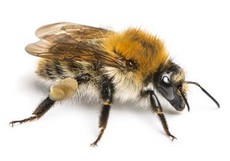
A bee swarm usually takes about three hours to retrieve all the bees, and these bees will be alive and well.If possible I will re home them in a new hive were they will finish their special process of procreation.
We will try our best to find a beekeeper to take the swarm to so they can be re-hived. If there is nobody ready to have the swarm, we will leave the captured bees in a quiet area (usually a wood) well away from your property. The bees will then find their new nest the natural way. This new nest will probably be in a hollow in a tree.
If unfortunately you have bees in the cavity of your wall etc, the above process is not possible and other methods will have to be applied. There will be a charge of £65 for this service. This service will not take long and the problem should be solved within a few hours after the methods have been applied. It's the same as treating a wasp nest.
ABOUT WASP CONTROL
Wasps can be a serious pest around your property. Their nests can be in your loft space, in the cavities of your walls, underground in your garden and under the eaves of your house.
A single over wintered Queen will start to build her nest in spring and by summertime can be many thousands strong.
Wasp nests should not be approached or aggravated by an unqualified technician. They are very aggressive when protecting the nest, which can cause serious illness to unprotected people. One sting will give off pheromones that cause the wasps to go into protect the nest mode, resulting in many hundreds of wasps stinging the source of the pheromone.
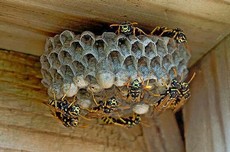
If you have a wasp problem, Asland Pest Control have all the necessary equipment to deal with a nest. The treatment will usually get rid of the problem within one day, but a follow up phone call after five days to check the wasps have gone is our policy. If the problem is not solved by this length of time we will come out and treat again Free of charge.
The cost of a callout to a wasp nest is £55 within the areas of Preston, South Ribble, Chorley, Southport and the Fylde. But we can come out to problems outside these areas for a slightly higher cost.
ABOUT ANT REMOVAL SERVICES
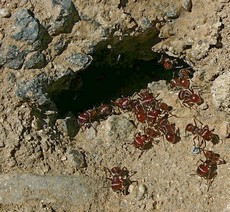
The Type of ants that usually cause problems is Black Ants or the Common Garden Ant.
They are nothing more than a nuisance but can be most annoying while you are sat out in the garden. They do regularly get in to houses looking for sweet foods. This is not good because they will invade cupboards and contaminate stored food.
Treating them is relatively straight forward using gel baits, dusts and sprays. Occasionally it may take more than one visit to solve the problem, but one visit is usually enough.
This treatment cost from £45 per visit depending on area.
Pharaoh's Ants
Pharaoh's ants are smaller than black ants.
These ants like warm environments and are regularly found in Hospitals and Hotels etc. They can be hard to eradicate due to how they spread around a building. They will build more than one nest and use a process called budding, this means the ants will place new queens in many nests.
You have to be very careful whilst treating these ants as spraying the nests can make the situation worse (spaying may cause further budding) Gel baits have to be used and it is a necessity to have full cooperation with your neighbours because if they spray them they could send a large colony into your property.
A full survey of the infestation will be needed to give a price for this treatment, but it must be stressed that treating Pharaoh's ants can be expensive due to the nature of how they spread.
ABOUT BED BUGS
BEDBUGS (Cimexlectularius)
Bedbugs feed on your blood. They are attracted to you by the Co2 you exhale and the heat from your body.
They leave their harborage at night and crawl on to you when you sleep. This is when they bite you and feed on your blood. Once they are full they crawl back.
The face and neck is where bedbugs tend to bite

Adult bedbugs are visible to the naked eye. They can be 5mm in length, they are very flat and oval in shape. Apart from bites on your body, seeing black or bloody brown spots on your bedding is a good indication of an infestation.
Bedbugs will hide in cracks in the bed, behind loose wallpaper, in the seams of your mattress and even in electrical switches. All these locations will be inspected to determine an infestation.
One adult female can lay up to 300 eggs during a lifespan which varies in time due to favorable or unfavorable conditions. For instance it is not uncommon for adults to survive 9 months and in some cases up to 12 months without having a blood meal. 10 days is the incubation time for the eggs.
They are insects which have an incomplete metamorphosis (they don’t hatch into a grub). This means they hatch in to light coloured miniatures of the adult.
After several moults they become adults. These moults take 6 to 8 weeks to complete. You may see the cast skins on your bedding.It must be said here that bedbugs need to feed on blood to become adults and breed, as already stated bedbugs can hide and survive up to 12 months without a meal.
Bad hygiene is not always to blame for an infestation of bedbugs. Due to the movement of people in modern times, bedbugs have been able to become common again. They hitch rides in suit cases, public transport and many other items that move around the world, and can quickly infest homes and hostelries. It is fact that during the 1950s and 60s bedbugs had almost been eradicated in the UK.
Give us a call if you suspect Bedbugs
About Cockroaches and Infestation
The German cockroach
The most common cockroach is the German cockroach. It is a good climber and will be seen on walls above waist height and above, as well as on the floor. It can crawl through very small gaps and breed at an alarming rate; six generations in 12 months is not uncommon. One egg case or ootheca will hold about 40 eggs. The female carries the egg case (2 to 4 weeks) until very near the time of hatching, then deposits it.
The Oriental cockroach
Larger than the German and harder to get rid of. Has a habit of depositing its egg case away from the main infestation, and lays it as soon as it has formed. It will contain about 16 eggs which will hatch in about 63 days (between 6 to 12 weeks).
 It is best to do a survey of the situation at night, this is when the pests are active and they will retreat from light. Once the harborage is traced treatment can begin. Gel baits are the best as they are ingested and taken in to the nest causing a cascade effect due to secondary poisoning by way of dead cockroaches being eaten by the still alive cockroaches. The cannibalistic nature of these insects aids us greatly in destroying colonies. Sticky traps should also be used and if they are set out in cockroach free buildings as monitoring traps, they will help in identifying a problem before it gets out of hand. Insect growth regulating sprays may help by means of stopping the nymphs reaching sexual maturity.
It is best to do a survey of the situation at night, this is when the pests are active and they will retreat from light. Once the harborage is traced treatment can begin. Gel baits are the best as they are ingested and taken in to the nest causing a cascade effect due to secondary poisoning by way of dead cockroaches being eaten by the still alive cockroaches. The cannibalistic nature of these insects aids us greatly in destroying colonies. Sticky traps should also be used and if they are set out in cockroach free buildings as monitoring traps, they will help in identifying a problem before it gets out of hand. Insect growth regulating sprays may help by means of stopping the nymphs reaching sexual maturity.
All cockroaches live in clusters, they leave smear marks, they seek darkness,can live up to 9 months, males feed most days, females spend 75% of their life not feeding, nymphs forage little. Cockroaches must have water so leaky pipes must be repaired.
Like the bedbug, cockroaches go through an incomplete metamorphosis. This means they do not go through a pupae stage. They hatch out into miniature adults and go through numerous moults before they reach maturity.
Because of the diseases these insects can spread it is best to get a qualified technician to start treatment as soon as you may suspect an infestation.
There are other species found in the UK but the two above are the most common. Please bear in mind that they are difficult to treat and your full cooperation is needed.
Moth Pests
There are numerous moths which can be classed as pests. The common clothes moth and the case bearing moth can cause considerable damage to natural fabrics in your home. Clothes moth larvae will leave holes in the contents of your wardrobe and will damage curtains etc.
Other evidence of these moths is silk threads stuck to fabrics, a bit like clumps of cobwebs. The case bearing moth larvae love to 'eat' your carpet and will cause considerable damage in a short period of time if they are left un-treated. If bald patches start to appear around the edges of your carpet, they should be inspected immediately. This could indicate the presence of either carpet beetles or case bearing moths, or both!
Treatment must be thorough and is best done by a qualified technician. Residual sprays and powders will be used to good effect.
There are some moths which will infest stored products and render them unfit for Human consumption. The warehouse moth and the Indian meal moth are two of these. They like to infest flour etc causing a real threat to the goodwill of a food business. Any product found to be harbouring these pests should be discarded immediately.
It must be said that these pests could be brought in to the premises via goods bought in. So it is essential that reputable suppliers be used.
Spilt flour in your domestic cupboards will attract moths as will a bag of flour that has been laying around for a while. The best way to store flour etc is to keep it in sealed containers.

